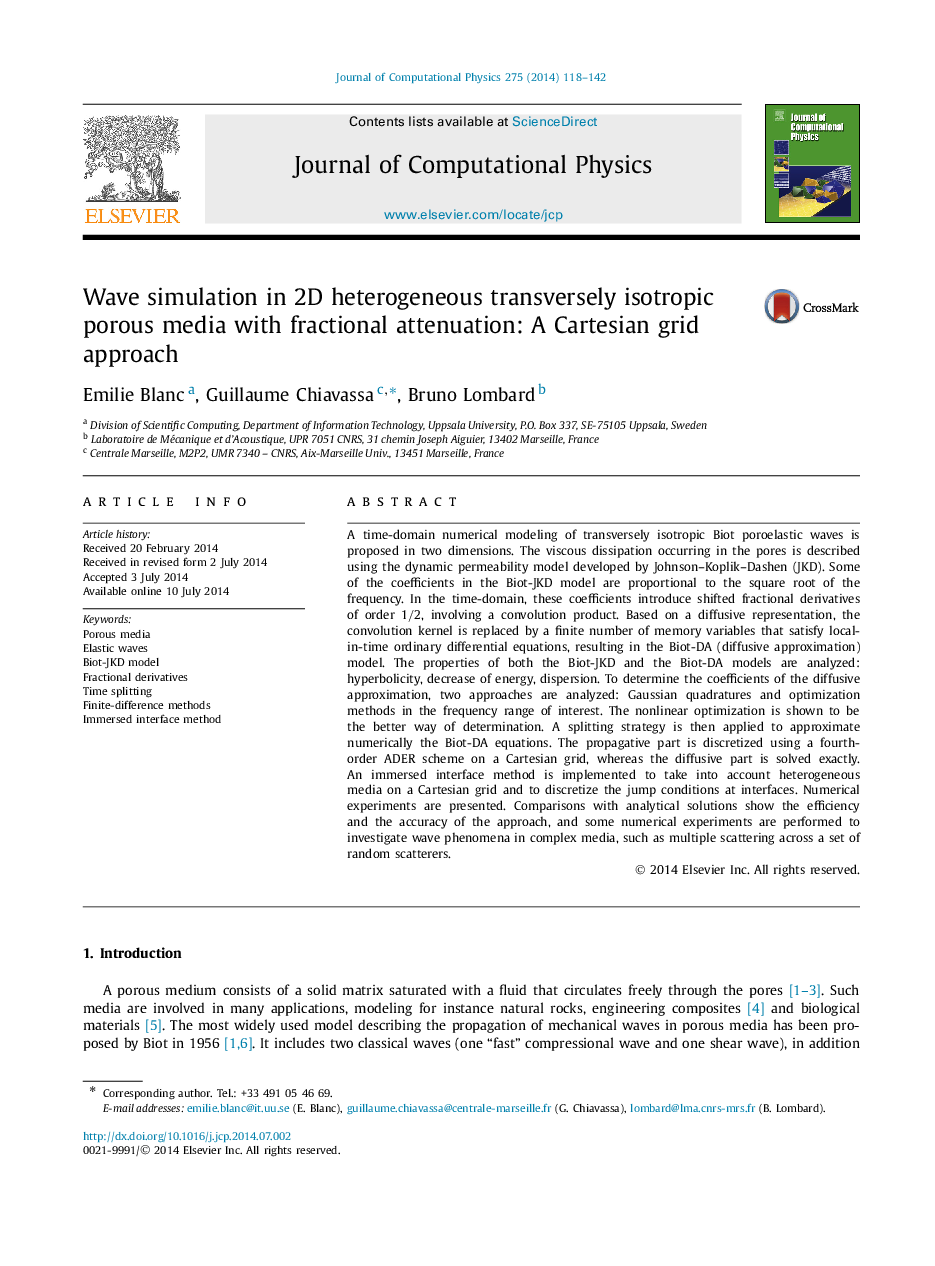| Article ID | Journal | Published Year | Pages | File Type |
|---|---|---|---|---|
| 6932305 | Journal of Computational Physics | 2014 | 25 Pages |
Abstract
A time-domain numerical modeling of transversely isotropic Biot poroelastic waves is proposed in two dimensions. The viscous dissipation occurring in the pores is described using the dynamic permeability model developed by Johnson-Koplik-Dashen (JKD). Some of the coefficients in the Biot-JKD model are proportional to the square root of the frequency. In the time-domain, these coefficients introduce shifted fractional derivatives of order 1/2, involving a convolution product. Based on a diffusive representation, the convolution kernel is replaced by a finite number of memory variables that satisfy local-in-time ordinary differential equations, resulting in the Biot-DA (diffusive approximation) model. The properties of both the Biot-JKD and the Biot-DA models are analyzed: hyperbolicity, decrease of energy, dispersion. To determine the coefficients of the diffusive approximation, two approaches are analyzed: Gaussian quadratures and optimization methods in the frequency range of interest. The nonlinear optimization is shown to be the better way of determination. A splitting strategy is then applied to approximate numerically the Biot-DA equations. The propagative part is discretized using a fourth-order ADER scheme on a Cartesian grid, whereas the diffusive part is solved exactly. An immersed interface method is implemented to take into account heterogeneous media on a Cartesian grid and to discretize the jump conditions at interfaces. Numerical experiments are presented. Comparisons with analytical solutions show the efficiency and the accuracy of the approach, and some numerical experiments are performed to investigate wave phenomena in complex media, such as multiple scattering across a set of random scatterers.
Keywords
Related Topics
Physical Sciences and Engineering
Computer Science
Computer Science Applications
Authors
Emilie Blanc, Guillaume Chiavassa, Bruno Lombard,
